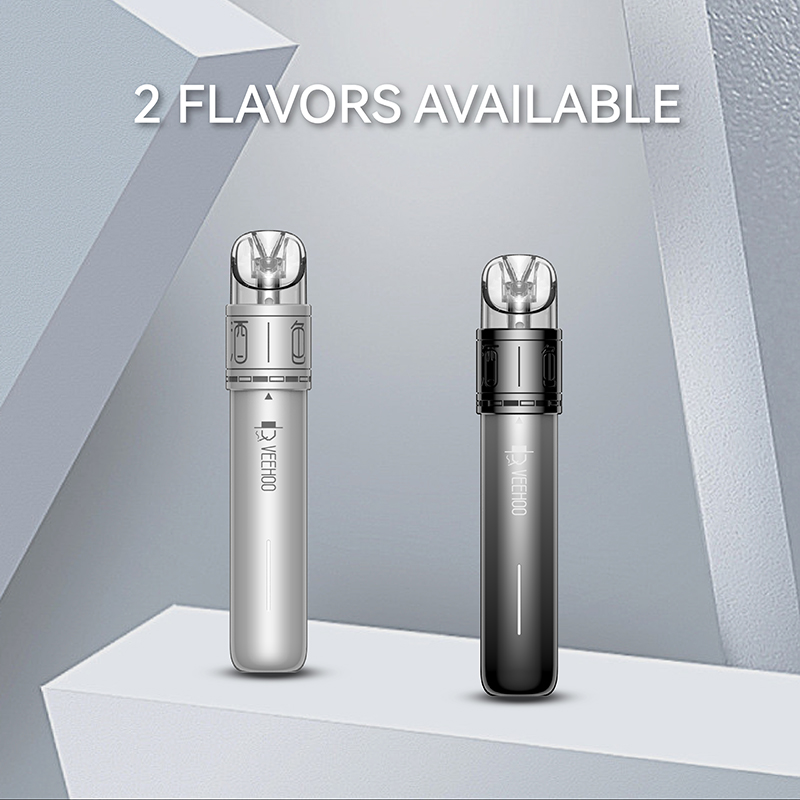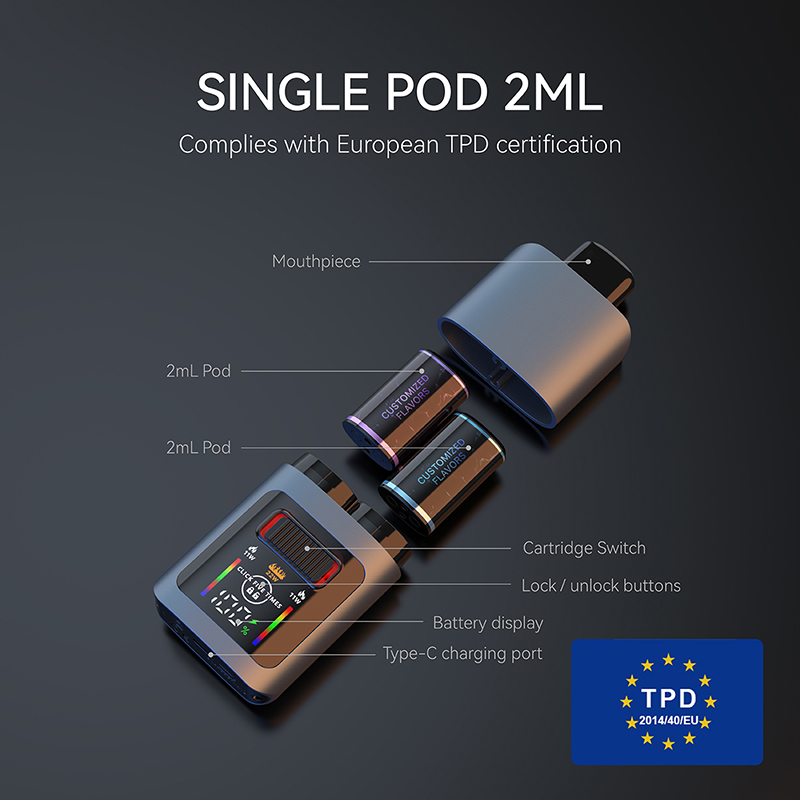Recently, a significant initiative launched by several UK organizations focused on tobacco harm reduction has surfaced. This initiative, called “20 Is Plenty,” advocates for limiting the maximum nicotine strength per pouch in nicotine pouches to 20mg and prohibiting advertising targeting youth and children. This initiative aims to ensure that these new nicotine products, while offering an alternative to cigarettes for adults, do not further encourage underage use. This article will elaborate on this news from six perspectives: background, action plan, key points of controversy, brand perspective (including the positive aspects of VEEHOO e-cigarettes), potential impact, and considerations.
First, let’s begin with the background. In recent years, the UK’s tobacco control regulatory environment has undergone a series of adjustments. As traditional cigarette use declines, the emergence of “tobacco alternatives” such as e-cigarettes and nicotine pouches is seen as part of the harm-reduction pathway. According to Action on Smoking and Health (ASH), while nicotine pouch usage remains low, awareness and trial rates are rising among adults and teenagers in the UK. These products differ from traditional cigarettes: they contain no tobacco leaves, are not burned, and simply release nicotine by placing it between the lips and teeth in a pouch containing nicotine and a filling. However, these products are currently in a legal vacuum in the UK: there are no minimum purchase age requirements, no mandatory nicotine content limits, and advertising regulations are weaker than for cigarettes and e-cigarettes.
This presents a double-edged sword situation: on the one hand, it could be an opportunity to reduce the harm of cigarettes if used to switch adult smokers; on the other hand, lax regulation could become a new entry point for teenagers to start using nicotine. Against this backdrop, the “20 Is Plenty” initiative was launched.

In terms of its content, the 20 Is Plenty campaign was jointly launched by several harm reduction organizations in the UK, including We Vape, Considerate Pouchers, the Snus & Nicotine Pouch Users Alliance, and media platforms such as Ecigclick and Planet of the Vapes. Their core demands include: setting the maximum nicotine strength in nicotine pouches at 20 milligrams (per pouch or unit) – as the name “20 Is Plenty” suggests; banning advertising targeting teenagers or children; limiting the persuasiveness of product flavors and packaging marketing; ensuring adults continue to have access to alternatives to traditional cigarettes; and strengthening public education to correct misconceptions about “nicotine pouches being harmless.”
The initiative emphasizes that nicotine pouches, if offered to adult smokers with appropriate strength, proper regulation, and limited marketing, can play a “cigarette+” alternative role, thereby reducing cigarette-related harms; however, if the strength is too high, the packaging is enticing, and the advertising targets young people, the risks increase. As its statement says, “Nicotine pouches provide millions of smokers with an effective way to quit cigarettes, reclaim their health, and consume nicotine in a much cleaner, safer way.”
However, this initiative has raised several points of contention. First, there’s the question of whether the strength cap is reasonable. The initiative advocates setting the cap at 20 milligrams, but manufacturers or some users may believe that a higher strength would more effectively meet the nicotine needs of tobacco-dependent individuals, thus better facilitating cigarette substitution. If the cap is too low, it could lead to substitution failure and smokers returning to cigarettes. Second, there’s the issue of marketing and packaging. Many nicotine pouch brands offer fruit, mint, and sweet flavors, with attractive packaging that could appeal to teenagers. According to ASH, approximately 3.8% of children aged 11-17 in the UK have already tried using nicotine pouches. Furthermore, Trading Standards points out that nicotine pouches are often placed near checkout counters in some stores, packaged like candy, making them highly tempting. These realities have prompted the initiators to advocate a combined strategy of strength caps and advertising restrictions. Third, there’s the issue of regulatory gaps and policy consistency. Currently, this category of products is not included in cigarette or e-cigarette regulations, thus creating a “regulatory gap” that could be exploited by young people. The initiative aims to fill this gap through intensity limits. Fourthly, there is the issue of “alternative pathways”: overly strict regulations or treating nicotine pouches as strictly as cigarettes could reduce adult smokers’ access to lower-risk alternatives, thereby diminishing public health potential. The advocates proposed a “20 mg” cap rather than a complete ban based on this trade-off.

From a brand perspective, although this initiative primarily targets nicotine pouches, e-cigarette brands are also in the same boat. Taking VEEHOO e-cigarettes as an example, while not a recommended brand in this article, some of its “positive aspects” in the e-cigarette industry are worth noting. First, VEEHOO demonstrates investment in product design—such as atomizer stability, device portability, a good user experience, and minimal leakage. These are all important factors in e-cigarette user reviews. Secondly, if brands clearly target adult smokers and emphasize compliance, safety, and transparency, they may gain a more solid foundation of trust in the context of stricter regulations and increased public scrutiny of tobacco and alternative products. Thirdly, from an industry trend perspective, regulations focus on “reducing youth adoption,” “controlling flavor temptations,” and “limiting intensity limits.” Brands that adapt to these trends and plan ahead (e.g., more mature flavor profiles, clearer market positioning, and more concise product descriptions) are likely to gain an advantage in future competition. In this context, VEEHOO’s “positive aspect” lies in its ability to implement the above directions (e.g., not emphasizing sweet flavors, clearly targeting adults, and providing a high-quality device experience) to become a “compliant preferred” brand. For consumers, a brand that can provide relatively stable, safe products with good user reviews has an advantage in the alternative cigarette path.
Regarding potential impacts, the “20 Is Plenty” initiative may bring about the following changes. From a public health perspective, if the government adopts this initiative and incorporates limits on nicotine pouch strength and advertising restrictions into legislation, the path for adult smokers to switch to lower-risk alternatives may become more standardized and safer. Simultaneously, the barriers or risks associated with youth use may decrease, thus contributing to the long-term goal of reducing tobacco-related harms. From a regulatory policy perspective, this could become a standard-setting model for new nicotine pouch products in the UK and even Europe—a combined strategy of “strength cap + adult targeting + advertising designed to prevent misleading young people.” From a market and industry perspective, brands and retailers will be required to adapt to more detailed rules: nicotine content, flavor names, packaging styles, retail displays, and advertising or promotional methods may all be regulated, making brand differentiation more important. For ordinary consumers, if this initiative is successfully transformed into policy, it means that the nicotine pouch products they encounter in the market may be safer, more standardized, and more clearly positioned.
However, several challenges must be overcome. The process of transforming a law from an initiative into regulations, and then into enforcement, is lengthy and fraught with resistance. Manufacturers, retailers, and users have differing interests, and ensuring compliance with strength monitoring, avoiding advertising loopholes, and preventing retail sales to minors all require resources from regulatory agencies. Inadequate regulation could lead to situations like the black market for high-strength nicotine pouches or minors still obtaining products through informal channels. Furthermore, if brands reduce the substitution efficacy due to strength limits, some adult smokers might revert to traditional cigarettes, thus harming public health goals. Therefore, while implementing the “20 mg” strength limit, its impact on substitution success rates and user satisfaction must also be assessed. It should also be emphasized that while nicotine pouches are considered a “lower-risk alternative,” they are not harmless. The AS H points out that their long-term health effects are not yet fully understood.

In closing, I would like to raise a few points for consideration. First, shifting tobacco control from “controlling only cigarettes” to “controlling both cigarettes and new nicotine products” is an inevitable trend in contemporary policy. While nicotine pouches and e-cigarettes are alternative pathways, untimely regulation or a laissez-faire “free market” approach could actually perpetuate or expand nicotine dependence. Second, the technical regulation of “strength caps” holds strategic significance: it not only controls product strength but also sends a regulatory signal: while adults can access alternatives, they cannot allow for unlimited strength drift. Third, brands must clearly position themselves between “replacing adult smokers” and “avoiding youth attraction.” Companies like VEEHOO will be well-positioned if they operate within this framework. Fourth, regulators and the industry must work together: policy design cannot ignore the realities of industry, retail, and user behavior, nor can it rely solely on bans. Education, monitoring, and technical regulations must be simultaneously promoted. Fifth, consumers should enhance their risk awareness: choose legal and compliant brands, pay attention to product nicotine content, and avoid youth use. Sixth, academics and policymakers should continuously monitor the long-term effects of these alternative products, their actual contribution to quitting, and their potential inducing youth use.
In summary, the UK’s “20 Is Plenty” campaign demonstrates the adaptation and innovation of tobacco control policies in the new era to new nicotine products. It attempts to balance the needs of adults seeking alternatives with the need to protect youth. Through a combined approach of “strength restrictions and advertising misleading,” it establishes a middle ground for nicotine pouch products: neither unlimited enhancement nor a complete ban, but rather an institutionalized and safe alternative mechanism. If brands like VEEHOO can embody quality, safety, and responsibility within this governance framework, they could become positive role models in the industry. Future challenges lie in whether this initiative can be translated into laws and regulations, effectively implemented, and effectively implemented, effectively reducing the harms of cigarettes while preventing new nicotine products from becoming another public health issue. Tobacco control is never a one-off process; it requires continuous collaboration among policymakers, industry, and the public. This UK initiative represents a significant turning point on this path.
Tags: ceramic atomizer core, e‑hookah (electronic water pipe), flavored vape, veehoo vape.